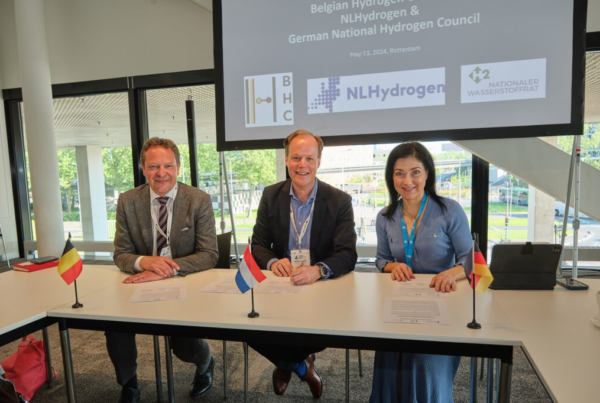
Demetrios Papathanasiou, Director of Energy at the World Bank, spoke about the green hydrogen industry.
Green hydrogen has emerged as an alternative to bet on the decarbonization of energy sources. Its potential to reduce emissions in transport and in the heavy industry sector (cement, steel and chemicals) has made it an attractive technological development for the future. However, it faces challenges related to financing and infrastructure, especially in emerging economies.
One of the actors that has taken an interest in this development is the World Bank, an entity that has sought to carry out projects for the growth of this industry in relation to the goal of net zero emissions by 2050.
Demetrios Papathanasiou, Global Director of Energy and Extractive Industries at the World Bank, was in Bogota for the Hydrogen Development Partnership (H4D) Partners and Stakeholders Forum and the third International Hydrogen Congress. He spoke with EL TIEMPO about the prospects of this industry.
Why was this event held in Colombia?
There are several reasons. On the one hand, the country has a series of entities that work for the development of the sector, including the Colombian Hydrogen Association, which has been one of our allies in the World Bank initiative. In addition, there is a very large potential in terms of green hydrogen that can be significant in the international market.
What are the objectives?
The first objective is to raise awareness about this new option that is emerging in the international energy market. The second objective is to look for ways to accelerate development and attract investment in a sector that, with its implementation, involves displacing other forms of fossil fuels with established infrastructure and technologies. The way to do this is to generate coordination between actors, and that is what the event is looking for.
What are the benefits of making the switch from fossil fuels to green hydrogen?
Coal and oil exports represent an important part of the Colombian economy. Clearly this is one of the country’s strengths, but it is an economic activity that is not going to be sustainable with the global goal of net zero emissions by 2050. Many of Colombia’s markets are on the other side of the Atlantic, and we see that in that region, especially in Europe, there is a clear commitment to advance this goal. The challenge and opportunity for Colombia lies in finding a way to be relevant in energy production while the world changes its energy model. Colombia, due to its natural characteristics, has an advantage in this regard and it is an area in which it has already made progress.
What is the size of this market?
When looking at global scenarios, it is clear that it is impossible to achieve the goal of net zero emissions without taking into account a green hydrogen component. That said, this is an early-stage market and is relatively limited; But it will grow to the extent that production costs fall to the point of being competitive with the costs of the non-renewable products it aims to replace. To achieve this, the key is to aggressively decrease the price of electricity used to produce hydrogen. Between 66 percent and 75 percent of clean hydrogen costs are generated by electricity. This is going to take time, but the global trend and the potential of the sector are elements that contribute to development, especially with the support of large economies such as the US, Europe or Japan that generate transition incentives.
Beyond these large economies, which regions of Latin America have made progress in green hydrogen?
We approved the first green hydrogen project in Chile a year ago; We are also working intensively in Brazil and we are already in the process of communicating with the Colombian government for the development of technical assistance in a project that we hope will be more concrete in the future. These are the three priorities for the region. The dialogue is similar with these countries, although the motivations are different.
In addition to funding, what are the main challenges to implementing this technology?
As we achieve an energy transition, one of the challenges is to identify areas where there is a market for hydrogen and then create the right conditions to help protect green hydrogen. Countries with refineries, given their need for hydrogen, may be ideal for developing the sector. Then, it is important to obtain financing concessions to position the market in the coming months.
SOURCE: EL TIEMPO by. Juan Andrés Beltrán Téllez
Original Article in Spanish: Banco Mundial: ‘En Colombia hay un potencial muy grande en términos de hidrógeno verde’ (msn.com)
Read the most up to date Fuel Cell and Hydrogen Industry news at FuelCellsWorks




